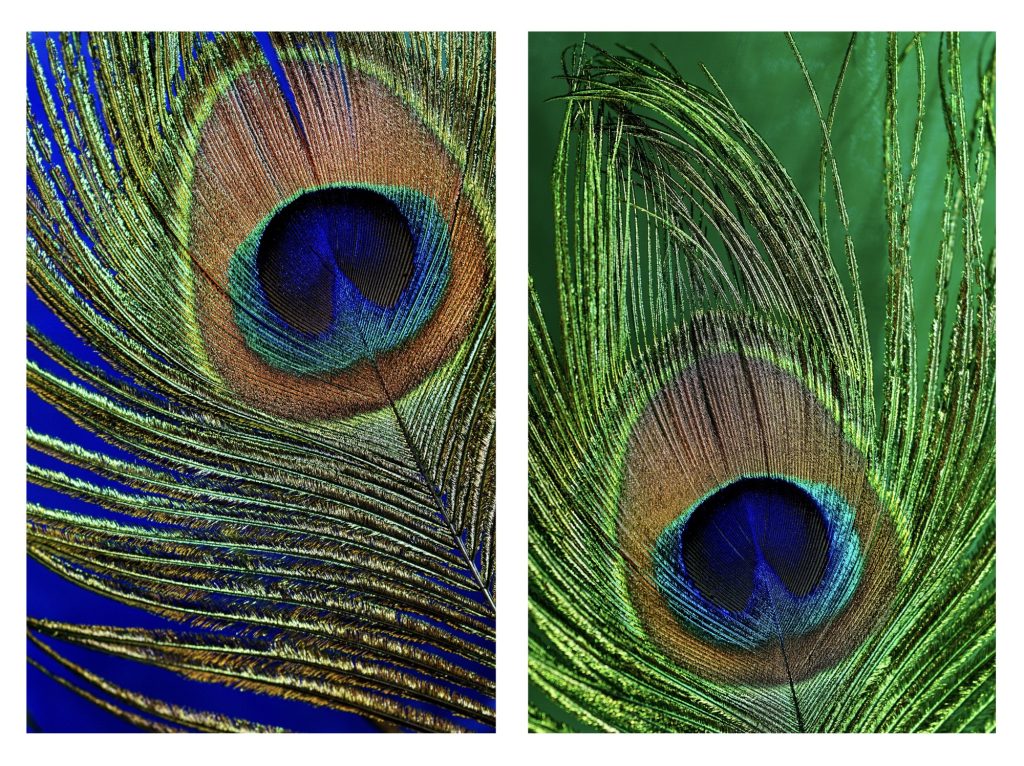
Terminology
The peacock’s distinctive long colourful tail with eye spots is also known as its train or upper tail. The individual feathers we call coverts as they cover the tail proper. This tail proper actually supports the train while it’s in the fan shape we so admire. The eye spots on individual covert feathers are also called ocelli (singular ocellus).
Trains are seasonal and their function is to attract a mate; the peahen. It’s the eye spots in particular that attract her.
Covert feathers are highly specialised, but is there much difference between them in the commonest peafowl colours, blue and green?
Blues and Greens, is there a difference?
We acquired our first Java Green Peacocks some 30 years ago. On seeing them mix with our Indian Blues we could see little variation in eye spot colours between the two. In daylight they appear much the same. But the difference is evident when the two colours display their trains in a building with lower light levels.
Over the years we’ve noticed that having Blue and Green peacocks in a pen with Blue peahens results in their offspring carrying a higher proportion of green-crossed chicks. This would suggest that the Blue hens are more likely to mate with the Green rather than the Blue cocks.
Research
Tests have shown that peafowl have excellent colour vision. Our hens find the colourful eye spots of the Green peacocks more attractive. I and my late friend and mentor Harry Hunter believed that the reason for this is down to their heritage. The Indian Blue is traditionally a more open-area dwelling bird, preferring the plains and river beds. It’s tail does not need to be very bright in the sunlight there to catch the eye of a peahen. However the Greens habitually live in more densely-covered areas such as forests where there is less direct sunlight. They therefore need a brighter display to attract their mates.
In 2012 Roz Dakin and Bob Montgomerie of Queens University Canada came to the same conclusion (using more science). With their work we now know a lot more about the hows and whys. Take a look at their poster which illustrates their work on the difference in eyespot colours across the two species.